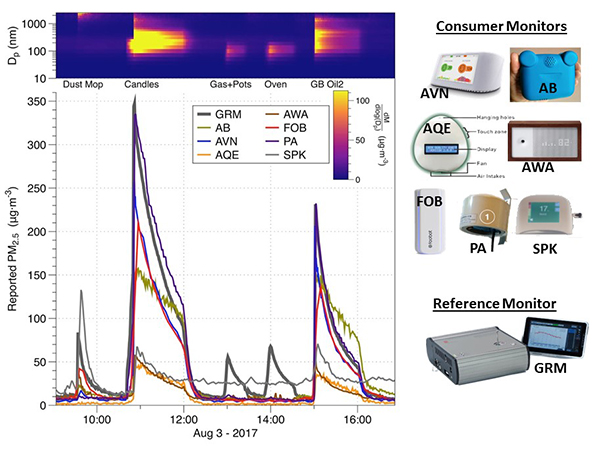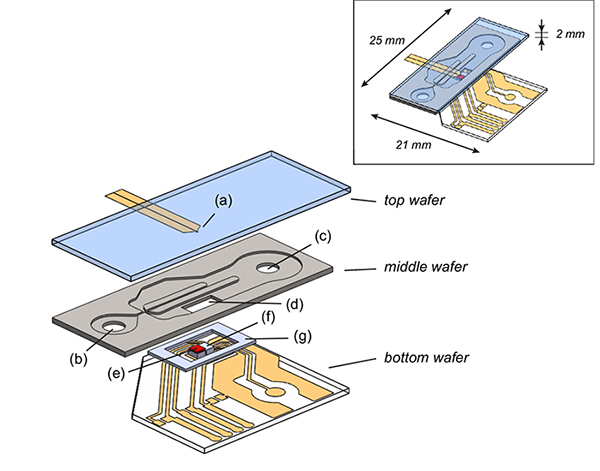Air Quality Sensors
Evaluating Consumer Indoor Air Quality Monitors
 Advances in low-cost sensor technologies have enabled development of indoor air quality monitors for the consumer market. These are many devices available for less than $300 that report concentrations of particulate matter (PM), temperature, humidity and sometimes carbon dioxide (CO2) or volatilate organic compounds (VOCs). To investigate the potential usefulness of these devices, we conducted experiments in which seven consumer monitors were used to measure fine particles from common residential sources. In the lab, we cooked bacon, green beans, pancakes, toast, and other foods; burned candles, incense, and cigarettes; heated pots of water and pans with oil on electric and gas stovetop burners; and shook a dust mop among other activites. Readings from the consumer IAQ monitors were compared to reference and research monitors.
Advances in low-cost sensor technologies have enabled development of indoor air quality monitors for the consumer market. These are many devices available for less than $300 that report concentrations of particulate matter (PM), temperature, humidity and sometimes carbon dioxide (CO2) or volatilate organic compounds (VOCs). To investigate the potential usefulness of these devices, we conducted experiments in which seven consumer monitors were used to measure fine particles from common residential sources. In the lab, we cooked bacon, green beans, pancakes, toast, and other foods; burned candles, incense, and cigarettes; heated pots of water and pans with oil on electric and gas stovetop burners; and shook a dust mop among other activites. Readings from the consumer IAQ monitors were compared to reference and research monitors.
We found that four of the consumer monitors responded to most of the particle-generating sources and provided results within a factor of two of the reference devices for all of the largest PM2.5 sources. Three of the consumer IAQ monitors did not provide clear signals across even the largest sources. And none of the consumer IAQ monitors detected sources that mostly released ultrafine particles. These results suggest that some consumer monitors are useful to alert occupants to PM2.5 emission events or to activate controls to reduce exposure.
Performance evaluations of the monitors in real homes and over time are still needed.
Low-Cost PM Sensor Development

The Indoor Environment Group is developing a low-cost PM sensor that uses thermophoresis - motion of particles induced by a thermal gradient - as the measurement principle. We designed and fabricated a micro electromechanical system (MEMS) air-microfluidic particulate matter (PM) sensor that is two orders of magnitude smaller than commercially available direct mass PM sensors. The small shape will enable our sensor to be incorporated into wearable devices for continuous recording of personal PM exposure levels. We demonstrated the performance of this sensor for measuring PM-mass emitted from diesel exhaust and tobacco smoke.
